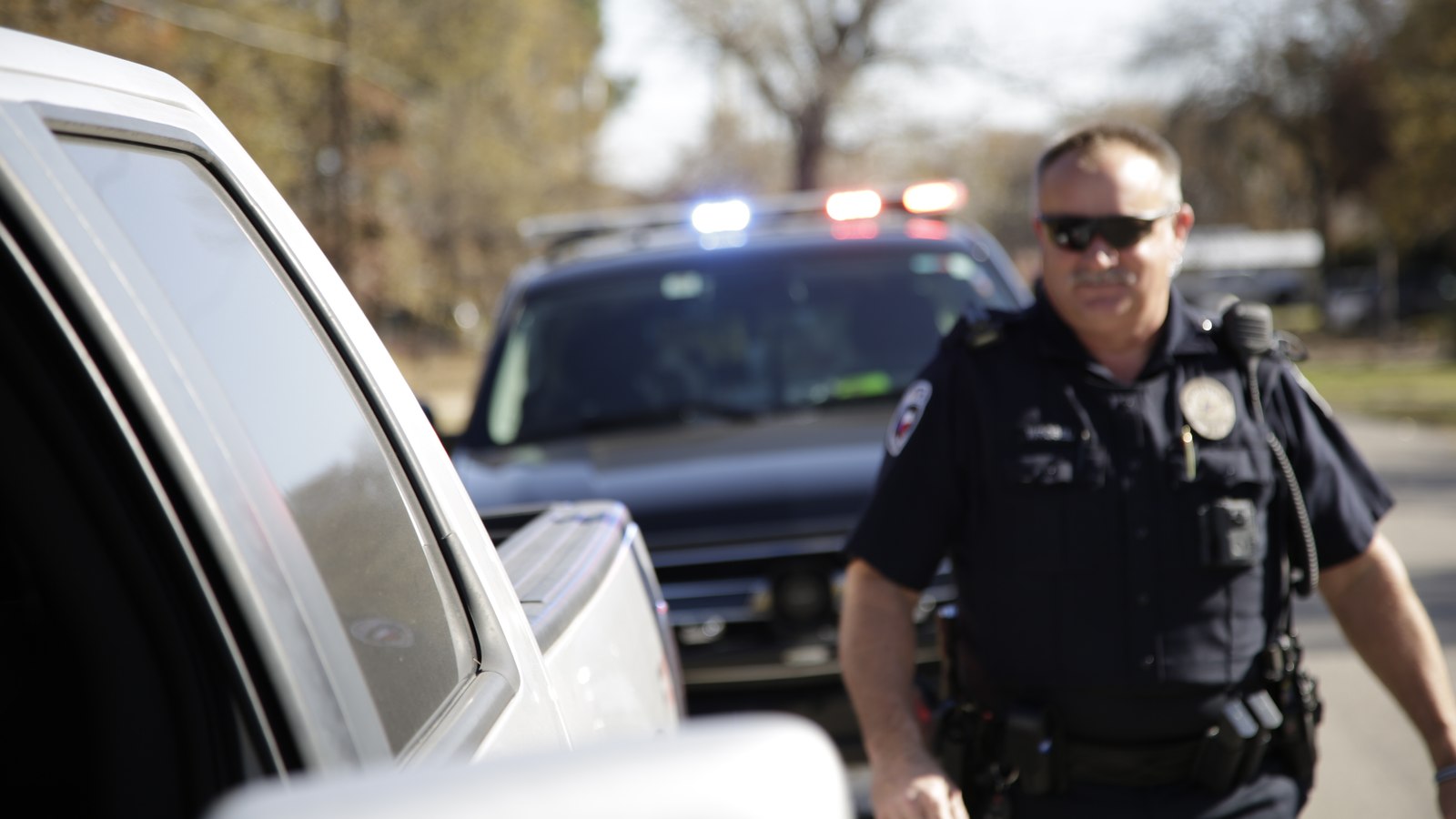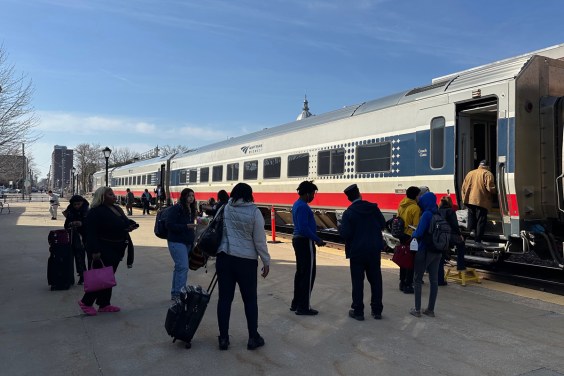
On Tuesday, the news came that after 41 years of teaching at UCLA, Donald Shoup, distinguished professor of urban planning, will retire. For all of us who have had our paths in life profoundly influenced by his research, writing, and teaching on parking and transportation, it's a good time to reflect. I never got to take a class from professor Shoup, but he has had more influence on my life and career than any of the professors whose classes I did attend.
Back in the spring of 1992, I was a student at Stanford in Washington, DC, studying international development. I was beginning to realize that before I tried to go to someone else's country and tell them how to improve their lives, I needed to learn a real practical skill and see if I could accomplish something at home, in a culture I actually understood. That same spring, an article appeared in the Washington Post -- "Subsidies Support a Drive-to-Work Habit" -- about the ways in which the federal tax code subsidizes parking while withholding tax benefits if people walk or bike or take transit. It piqued my interest.

I knew that a large and remarkably ugly parking structure had recently been built outside my dad's office on the Stanford campus, and I knew that I could get a permit to park in it for about $6 per month. I wondered how much it cost, and who really paid for it.
When I got back to Stanford in the fall, I went to see my future boss, Julia Fremon, the manager of Stanford's Office of Transportation Programs. I asked her how much it cost to build and operate a parking space on campus, and who paid for them. She said, "I've been wanting to know that too." Then she gave me a list of people to interview, and offered me a spot on the University's Committee on Parking and Transportation. Encouraged by this, I went to Green Library, descended into the stacks, and discovered the writing of professor Shoup.
All that year, I devoured articles and monographs authored or co-authored by Donald Shoup. I still have my original dog-eared copies of all those articles on my office bookshelf, and I still reference them today, when I'm out in the world trying to persuade city planners and council members to think differently about transportation. There were all those great articles, some newly published: "Employer-Paid Parking: the Problem and Proposed Solutions," by Shoup and Willson; "Parking Subsidies and Travel Choices: Assessing the Evidence," by Willson and Shoup; and most importantly, "Cashing Out Employer-Paid Parking," the big Federal Transit Administration report by Shoup.
Professor Shoup managed to make the apparently dry topic of parking economics and regulation not only worth studying, but compelling, fascinating, and at times, hilarious. I vividly remember sitting down in the stacks, reading his research papers on parking and laughing aloud at the insanity of it all.
There's a passage in "Cashing Out Employer-Paid Parking" that I always recall. Regarding minimum parking requirements -- those government regulations that spell out the minimum number of parking spaces that must be provided, by law, at every destination -- Shoup had this to say:
Minimum parking requirements in the planning profession are closely analogous to bloodletting in the medical profession. For over two thousand years doctors prescribed bloodletting to cure most diseases, and medical textbooks contained elaborate parking-requirement-like tables telling exactly how much blood should be let from exactly which part of the body, and when, for every disease...
One strong similarity between bloodletting and minimum parking requirements is the general public acquiescence to both practices without any scientific research on their effects...
Another similarity between bloodletting and minimum parking requirements is the harm caused by both practices. In the case of bloodletting, the problem was magnified because physicians didn't clean their instruments before proceeding to the next patient. In the case of parking requirements, the problem is magnified when planners require far more parking than is demanded even when all parking is free. Recall here that Willson (1992) found that the number of parking spaces required by zoning ordinances was double the peak accumulation of cars parked at suburban office sites in Southern California.
A final similarity between bloodletting and minimum parking requirements is that the practice of bloodletting gradually fell out of use, and minimum parking requirements in zoning ordinances are gradually being replaced by parking caps.
Don Shoup made it clear that the way we as a society handle parking is unfair, inequitable, economically damaging, environmentally destructive, and results in some truly ugly places. Moreover, he offered clear, practical, and workable ways to reform things. So, I decided to become an economics major, study the economics of parking and transportation, and see if I could help implement Shoup's ideas.
Through my student research, I learned that Stanford's newest parking structure had a construction cost of over $18,000 per space gained, resulting in a total cost of $1,675 per year per parking space gained, every single month for the expected lifetime of the structure. I could get a student permit to park in it for just $56 per school year, meaning that the university had inadvertently created a subsidy of more than $1,600 per year that encouraged students to get around in the most polluting way possible. And it was a subsidy that was available only to those of us who could afford the cost of buying, operating, and insuring a motor vehicle.
Eventually, inspired largely by professor Shoup's writing, I wrote my undergraduate honors thesis on the economics of parking and transportation at Stanford. In it, I argued that it would be cheaper for the university to pay people to leave their cars at home than to bear the heavy cost of subsidizing more parking. Stanford offered me a job to see if it made sense to do that, and that got me started in my career as a transportation planner.
I have now been a practicing transportation planner for more than 20 years, and my colleagues and I still use the lessons we learned from professor Shoup just about every day, in cities all over the world. With lots of help from my colleagues, I've been able to help implement Donald Shoup's ideas in many places since 1992, when I first discovered his work.
Perhaps the best tribute to Shoup's work is that once communities try these recommendations, they rarely go back. From Argentina, where the nation's largest city recently removed all minimum parking requirements, to the variably-priced parking meters outside my window here in San Francisco, professor Shoup's recommendations are taking hold, and making cities better.
If you are looking for something worthwhile to do in your career, as I once was, try reading Donald Shoup. You won't regret it.
Patrick Siegman is a transportation planner and economist. Since 2002, he has been a principal at NelsonNygaard Consulting Associates. His recent work on parking reform includes leading the Downtown Berkeley Parking and Transportation Demand Management plan and the Downtown Ventura Mobility & Parking Plan, and serving as an advisor to San Francisco's SFpark program. UCLA Professor Donald Shoup, the eminent parking scholar, calls him "the first Shoupista," for his early work implementing Shoup's ideas.





